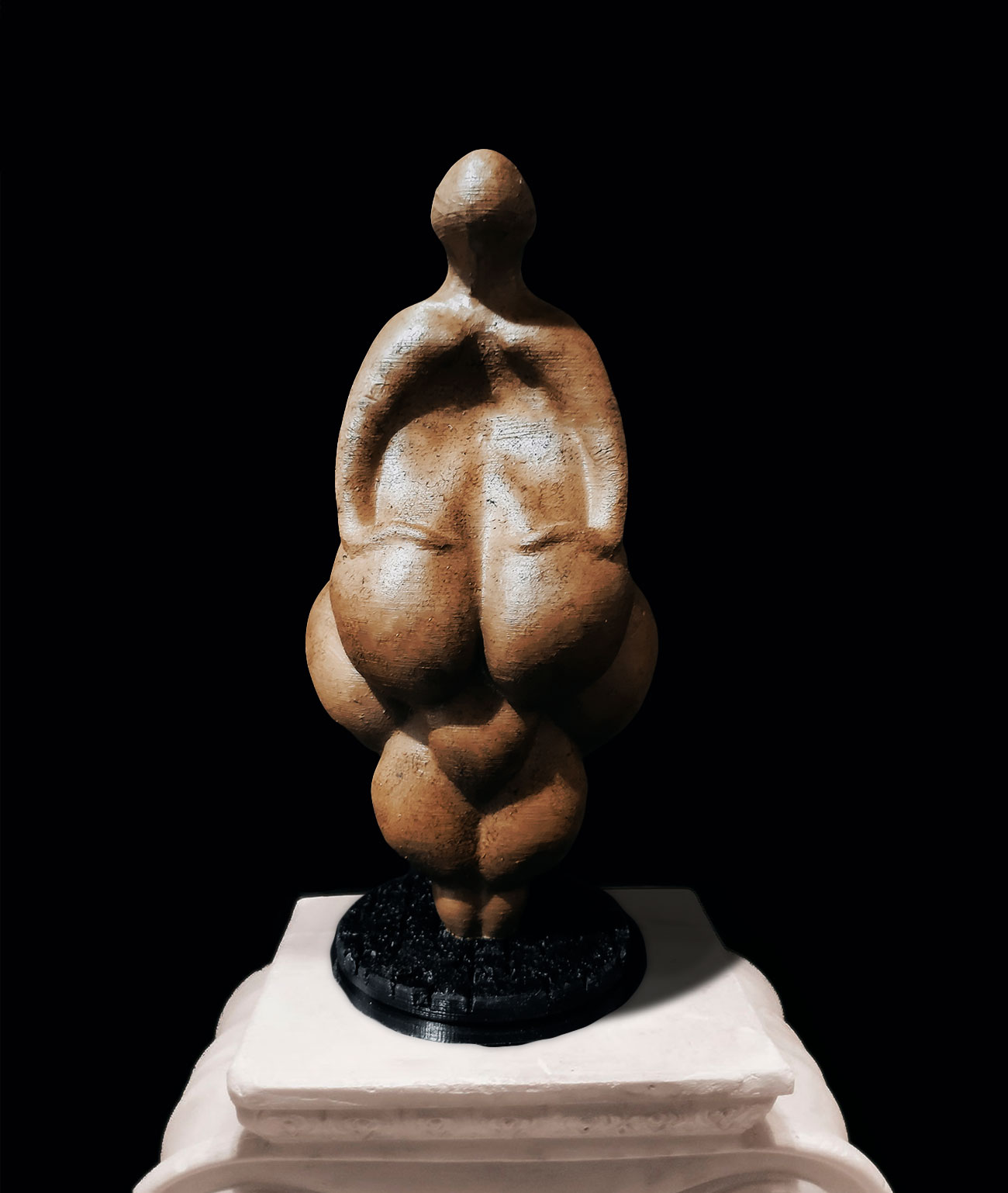Pack Venus Willendorf & Venus Lespugue 20cm. Exact replica. Marble powder finish
€58,95 – €99,95 (Inc. Tax)
Pack Venus Willendorf & Venus Lespugue 20cm. Exact replica. Marble powder finish
HISTORICAL DESCRIPTION OF VENUS LESPUNGE:
We are before an image of the Venus de Lespugue, made in ivory and with a size of almost 15 cm. It was discovered in 1922 by R. de Saint-Perier in the Rideaux Cave in the French Haute-Garonne. It is dated between 26,000 and 24,000 BC. C. which places it in the Gravettian period within the Paleolithic. Today it is considered one of the best samples of what we know as Mobile Art, or prehistoric sculpture.
MATERIAL AND TECHNICAL ASPECTS: It is a round carving on ivory, the technique is quite rough, however the use of some abrasive material such as sand to polish the carving and the use of sgraffito, especially appreciable on its part, seems likely. later. Great skill can also be seen in the carving of volumes and the carving of convex shapes, which gives softness and a surprising expressive force. We can appreciate a certain stylization, due to its height that contrasts with the bulk of its buttocks and hips, transmitting a certain sensation of instability.
FORMAL ASPECTS: The theme of the carving is the female nude and it is framed within the Venus set, the most interesting topic within Mobile Art, these Venuses are found throughout Europe and appear detached from Rock or Parietal Art. In its composition, a closed anatomical structure is chosen, and the law of symmetry is followed, very typical of primitive art. One of the common characteristics, in all these Venuses, is the hypertrophy of the feminine features, such as the sex, the breasts, the buttocks and the hips, this hypertrophy, also known as “steatopygia” is quite remarkable in this Venus of Lespugue . A certain degree of abstraction on the part of the artist is remarkable, focusing on what is essentially feminine, ignoring the rest and moving away from naturalism, more typical in Rock Art, thus, Venus is represented without any facial feature
FUNCTION AND MEANING: Even without knowing precisely the function and meaning of these sculptures, the most accepted among prehistorians is that they are objects with a certain symbolic character or talismans. In the case of the Venuses, it would be objects that would promote a certain magic of fertility, which would favor conception and human procreation.
HISTORICAL DESCRIPTION OF THE VENUS OF WILLENDORF:
The person who carved the Venus of Willendorf from a piece of limestone was undoubtedly quite an artist. It is not known where it was made, but what was its last destination before it fell into its torpor of thousands of years to be discovered in 1908 at the archaeological site of Willendorf, in Austria.
Its dating coincides with other Paleolithic art figurines that appear in Europe with dates around 25,000 BC. which demonstrates that the female figure during the Gravettian had a great importance that was reflected in artistic representations.
Despite its small size (just over 11 cm high) there is no doubt that it is a highly elaborate piece and that a lot of time and effort must have been invested to make it.
On the other hand, and continuing with its small size, its dimension allowed it to be taken with it wherever it went. A good object to transport in the places where these nomadic Paleolithic societies settled. A little Venus with a lot of meaning.
Well Venus… The group or people who made and displayed it would not refer to this piece as Venus. This name was given in relation to the Roman goddess with the same name. Upon being discovered, she was associated with the deity of love and beauty and hence the parallelism.
DATING A PIECE OF STONE? AGE OF THE VENUS OF WILLENDORF
You may be wondering, of course. In fact, we have ever given you the ember with the dating systems in archeology and you will know that for this, an organic compound is necessary.
But you will also know that there are other dating methods that were used to calibrate the creation dates of the Venus of Willendorf.
On the one hand, a relative chronology was established by comparing it with similar pieces that were appearing throughout Europe and that, without a doubt, had a great aesthetic similarity with this famous piece.
On the other, the stratigraphic levels of the archaeological excavation in Willendorf, where the piece appeared. If we can find an object that can be mechanically dated to the same stratigraphic level, it is likely that they are from the same time.
SKU
N/A
Category Prehistoric and pre-Columbian art
---------- Compartir producto ----------






